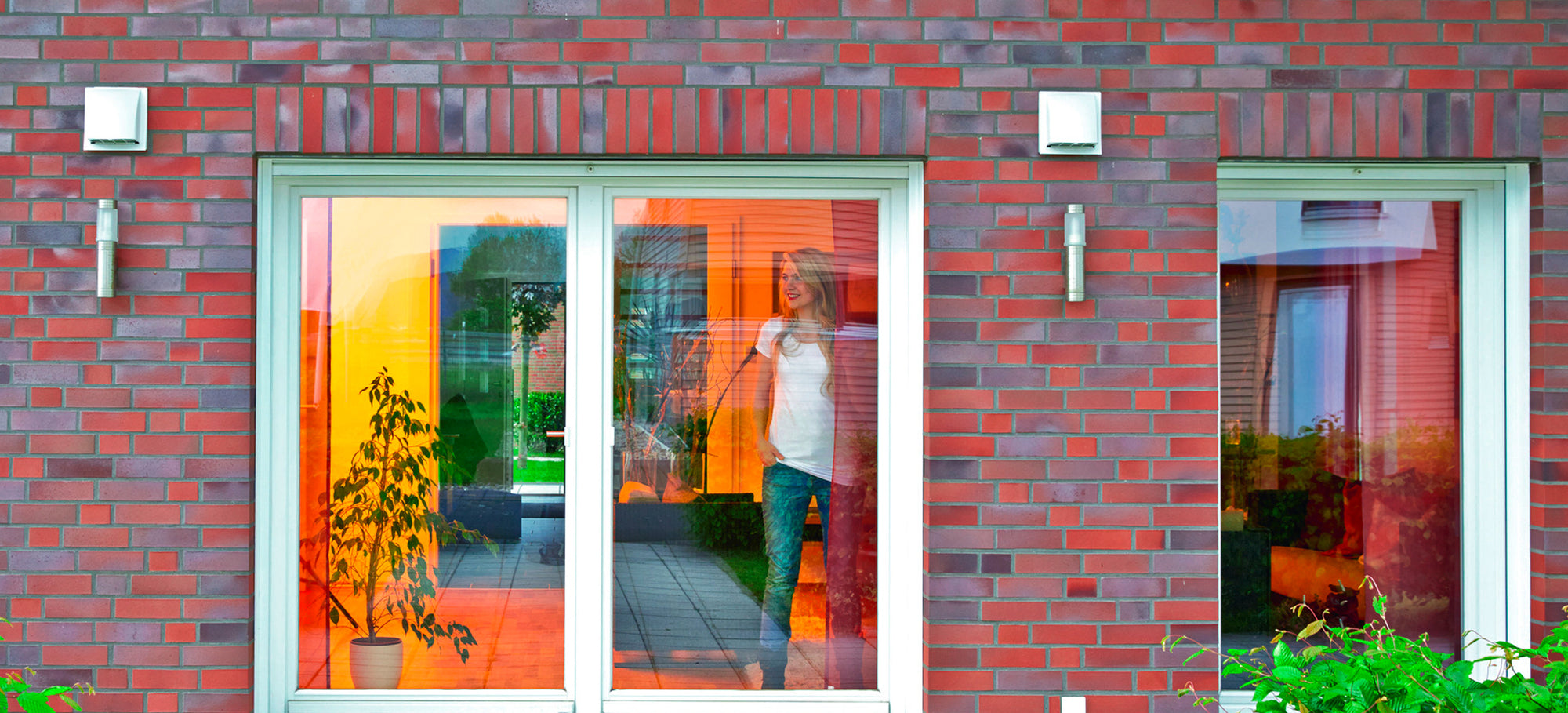Fresh air heat exchangers are a money-saving contribution by reducing heating costs.
The ITG study Schulze/Darup 2022 calculated the influence of fan-assisted ventilation with heat recovery (WRG) on the heating capacity of a heat pump for all house designs from passive house to EH 40 house and normal house.
Ventilation systems with heat recovery reduce the heating capacity of a heat pump by up to 50% in a passive house and by up to 21% in a normal non-EH house.
The heating power savings are even higher in the cold season, when the systems are most effective. The study concludes that fan-assisted residential ventilation with heat recovery is a key technology for the heat transition in new construction and renovation due to its efficiency.
And in addition to the heating cost savings, it also offers the comfort of a pleasantly tempered fresh air supply and moisture removal - for the benefit of health and building protection and against the formation of damp mold.

Comparison of the heating load of calculations according to DIN EN 12831 and Passive House Project Planning(PHPP) as well as the average performance in January using the example of a multi-family house with 1200 m² living space and 18 residential units (source: Schulze Darup 2022)
Comparison of window ventilation and fan-assisted ventilation with heat recovery
| Window ventilation | Fan-assisted ventilation with heat recovery | |
| Function and effectiveness | Depending on weather conditions and ventilation behavior | Continuous and demand-based ventilation |
| Removal of pollutants | Only ensured with regular cross-ventilation approx. every two hours | Regular removal of pollutants |
| Humidity & mold risk | Dependent on ventilation behavior; incorrect ventilation & construction defects lead to mold growth | Even basic ventilation can prevent mold due to regular air exchange |
| Possible building damage due to moisture | Moisture damage can be observed in many unrenovated and poorly renovated buildings | No structural damage due to moisture; only in the case of clear deficiencies in building physics; ventilation technology for damage repair possible |
| Time required for ventilation | Approx. every two hours cross ventilation for 5 to 10 minutes (actually also at night) | No time required |
| Draught | Draught only during ventilation | No drafts in the occupied area if the system is planned correctly |
| Odors | Odors can often be perceived when coming home, which must first be aired out. | Fresh air when coming home; additional ventilation during cooking or other odor-intensive activities |
| Heat and temperature distribution in the room | Cooling through ventilation; the temperature distribution in the room depends on the thermal insulation of the building | Even distribution of heat in the rooms, if the building physics is in order |
| Sound insulation | External noise pollution during shock ventilation, but especially during tilt ventilation, if the building is exposed to noise | constant sound protection against external noise; high-quality systems operate very quietly with sound pressure levels of 25dB(A) and above |
| Risk of burglary | No burglary protection during tilt ventilation; no ventilation when occupants are out and about | Burglary protection is maintained even when ventilated |
| Pollen and insects | Pollen and insects enter living spaces during ventilation; dust load in living spaces tends to be high | Pollen and dust can be largely filtered out by high-quality F7/F8 filters; insects remain outside |
| Comfort | Window ventilation requires expertise and constant action by occupants to achieve good indoor air quality | Comfort without separate effort in combination with high comfort with regard to numerous aspects |
| Energy efficiency and heat recovery | Ventilation of warm room air and cooling of rooms; ventilation heat losses approx. 40 kWh/(m²a) | Up to more than 90 % heat recovery from exhaust air; ventilation heat losses of good systems approx. 5 kWh/(m²a) |
| Energy & maintenance costs | 100 m² apartment: approx. 300 € increased heating costs per year compared to comfort ventilation (as of 2020) | In contrast, there are approx. 70 € electricity costs plus a good 60 € maintenance costs, 50 % of which are for increased comfort (as of 2020) |
(Source: Schulze Darup 2020)

